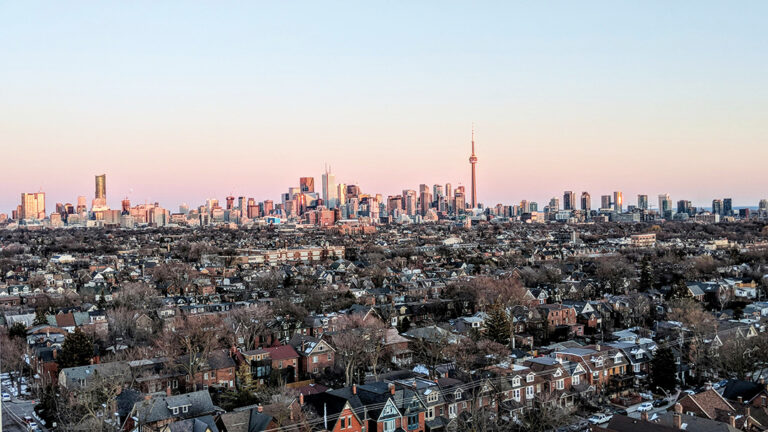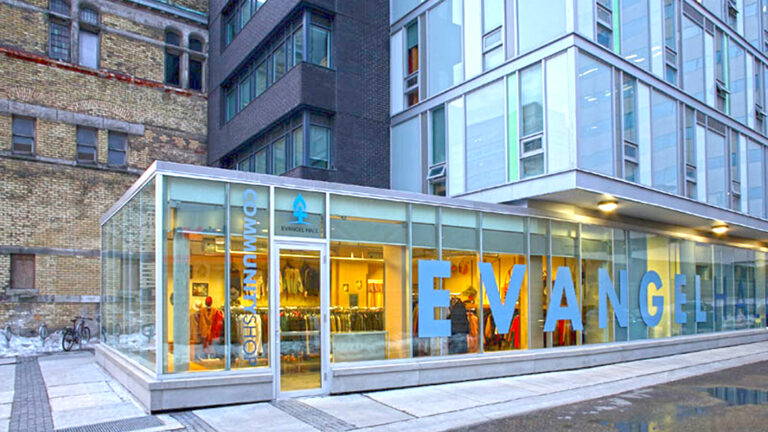For people with disabilities, “accessibility” means much more than a ramp or an elevator. From countertops to bathroom doors, most lodging fails to take their needs into consideration and finding affordable, adapted housing is the biggest barrier of them all. One Québec City group is working to tear down that wall with a housing inventory, an outreach campaign and by incentivizing builders to embrace “inclusive design” standards.
By Jeanne Lemba
Finding suitable and affordable housing can sometimes take years for people with disabilities, regardless of where they live in Canada. “In Québec (City), we have started to inventory the territory, and there may be 2.3% [3,500 units] of the housing in the region that is adaptable, which is not a lot when we talk about a region that has about 66,000 people living with functional disabilities,” says Dominique Salgado, executive director at the Comité d’action des personnes vivant des situations de handicap.
The wide gap between supply and demand means most people with mobility disabilities are inadequately housed, living in often shoddy dwellings that are not adapted to their needs. Small things taken for granted by able-bodied folk—like cooking, cutting vegetables on the countertop, switching on lights, and entering rooms—are daily challenges that require flexibility and resilience. Lack of a wheelchair-accessible entrance means many are forced to rely on others to help getting in and out of their home.
“People with disabilities tend to be very humble, people who don’t scream. That’s why organizations like ours shout out on their behalf,” says Salgado.
Based in Québec City, CAPVISH works to promote and defend the rights of persons with functional limitations.
Beyond accessibility: inclusive housing
Inclusive design, also referred to as universal or barrier-free design, denotes an environment that is easily accessible, and adaptable, meaning it can be enjoyed by people of all abilities.
An accessible building is constructed to be wheelchair accessible, which might entail ramps, automatic doors, elevators or lifts. But to live comfortably, and with dignity, people with mobility issues need a home that is also adapted. This can look like an apartment unit with wider door frames and no door sill to accommodate a wheelchair or mobility scooter. A person needing a wheelchair might need lower light fixtures and a larger bathroom to allow ease of movement or the presence of a caregiver—an inclusive home provides the creature comforts able-bodied folk take for granted.
Building homes abiding by the basic principles of universal design is encouraged among developers, but Salgado says there are few true incentives. This is among the reasons for the dearth of options for people living with visual or mobility issues, or who want to remain in their homes as they age.
“All this is legislated by the building code in Canada. The problem we have in Québec is that there is nothing to compel contractors who do not comply with the regulations. They [are] not obliged to respect the universal accessibility code; it is an aspiration, it is strongly recommended, but there are no sanctions. It’s different in Ontario [and] in Western Canada, where fines can be very high … anywhere from $30,000 to $50,000 a day.”
And leaving the situation to the discretion of entrepreneurs is unacceptable. “It’s time to wake up and invest in inclusive housing,” Salgado urges.
Turning the tide
CAPVISH is hell-bent on turning the tide once and for all with a multifaceted project that they hope will have a profound impact on all tenants living with a handicap in Québec City, and more specifically, in the Cité-Limoilou district. The Community Housing Transformation Centre has awarded $50,000 in support for the development of a Comité Logement (housing association) that will tackle inclusive housing issues.
“From the start, it has been the funding that allows us to employ someone to coordinate all the work related to the creation of a housing association. We want the Comité Logement to become permanent,” Salgado says. “[It] really allows us to foster growth and ideas for inclusive housing in Québec City.”
A bird’s-eye view of the true number of vulnerable disabled people in the borough of Cité-Limoilou, tracking the number of available and affordable housing units and compiling a register of nearby services will give credence and direction to the Comité logement when it deals with contractors and authorities to entice the building of housing that meets identified needs.
By involving tenant volunteers in data collection, the creation of podcasts, a blog, coffee meetings, and in production of news stories, CAPVISH is developing a participatory and influential strategy to achieve optimal citizen participation. There will be roughly 250 tenants directly involved, and they will go door-to-door to obtain data from 3,223 tenants.
“What we really hope to achieve with this [project] is to inspire socio-economic players and Québec City by offering recommendations. We also plan to hold a public consultation on housing, perhaps in 2023 or 2024, by holding a forum on inclusive housing in Québec City.”
And Québec City is also interested in the project, says Salgado.
“We will come to them with a turnkey project, saying, ‘we are ready to go ahead with a housing association that could be permanent and become a housing roundtable.’ ”
The work is not nearly over but has already led to the development of an application, AppLOAD, created for and by tenants with disabilities to meet the growing demand for accessible housing.
Steady progress
“There are two things we want to provide: it’s information on apartments, how many there are, and where they are, but also on vacancies,” adds Salgado.
Part of the work is networking with landlords, developers, and stakeholders—both in the private and community-housing sector—and asking to be kept abreast of new vacancies in current apartments while keeping a tally on new construction in the region.
Most importantly, says Salgado, AppLOAD adapts itself to the user:
“We want people to have a say on where to be housed and not have the state decide for them.”
Something that happens far too often, according to Salgado. People with disabilities are sometimes placed in long-term care homes, which is far from ideal.
But Salgado is optimistic.
“I think we have a beautiful organization, and a beautiful region, and we have people who need help, and we are there for them.’’



